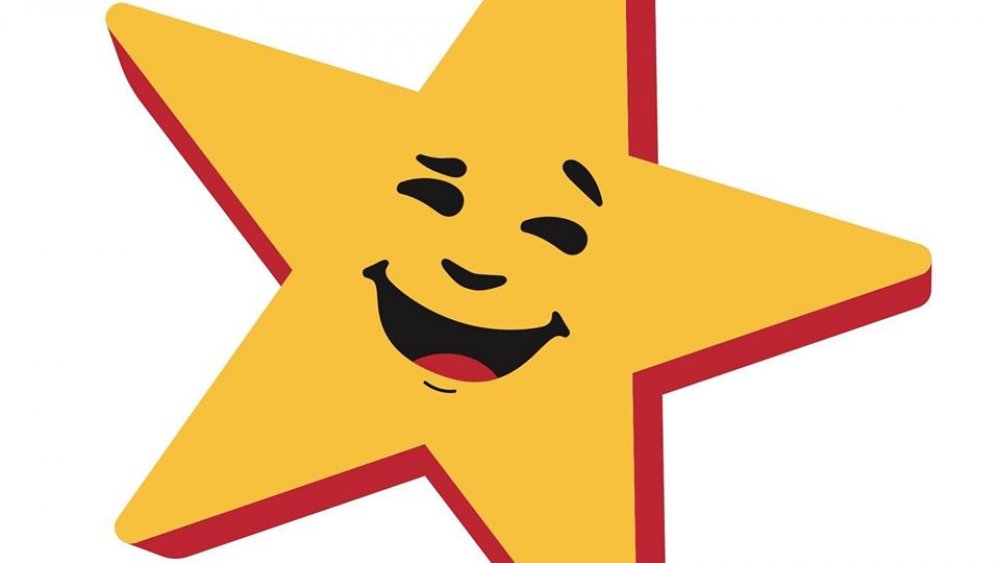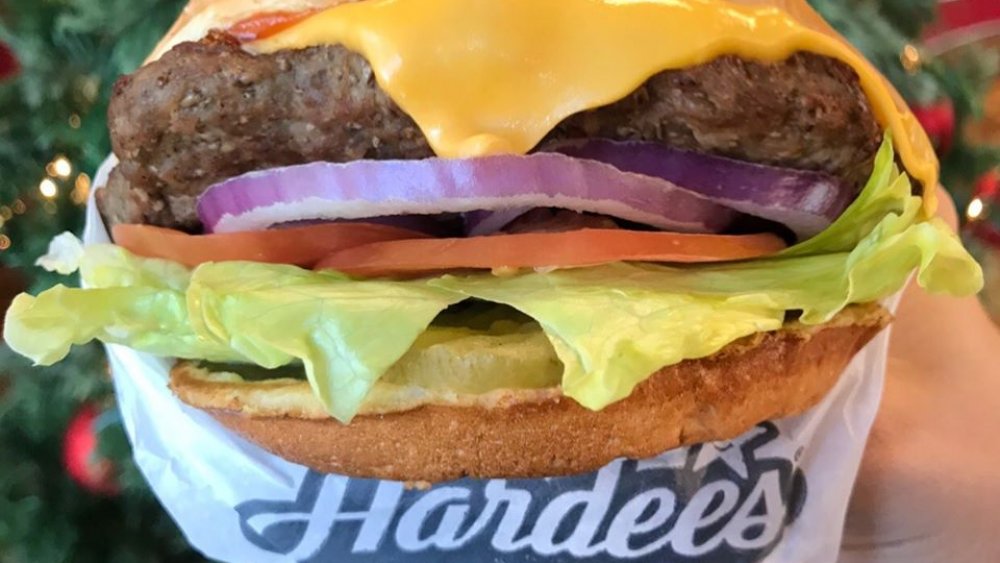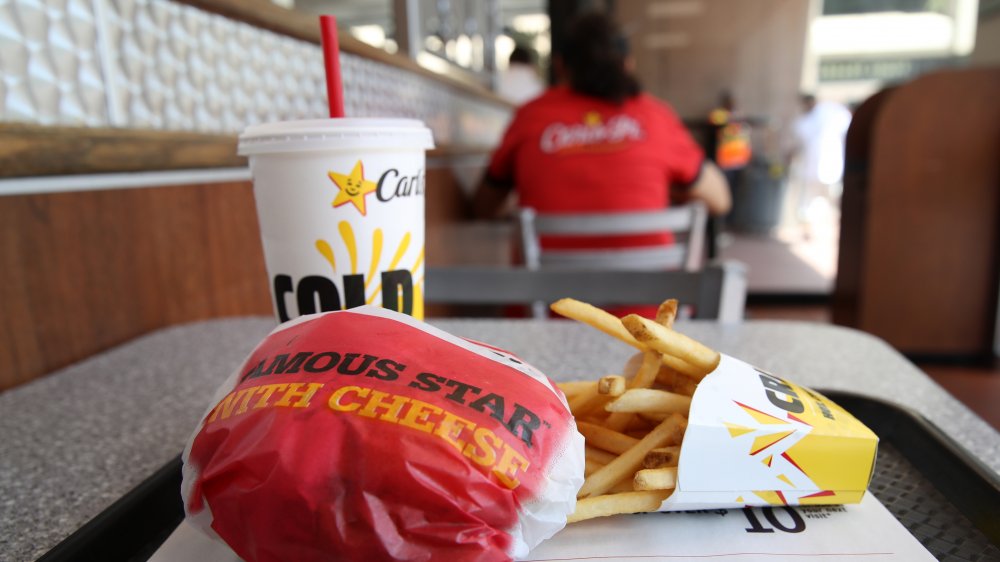What's The Difference Between Hardee's And Carl's Jr.?
Though Carl's Jr. and Hardee's are now owned by the same company, it may be surprising that their paths met at all, considering their vastly different origin stories in terms of both concept and areas of operation.
First, a quick review of the history behind these two chains: When Los Angeles-based aspiring fast-food entrepreneur Carl N. Karcher closed up his food cart, selling hot dogs, tamales, and chili dogs, after his first day of business in 1941, he counted a cool $14.75 in sales (via CKE Restaurants). It wasn't until 1945 that Karcher and his wife opened the full-service Carl's Drive-In Barbeque in Anaheim, California, which later added burgers in 1946 — and it wasn't until 1956 that the first Carl's Jr. location opened.
A few years later, clear across the country, another fast-food pioneer was making waves in Greenville, North Carolina, as Wilber Hardee had opened his first Hardee's location in 1960, serving "charco-broiled hamburgers," and within five months landed his first franchisee. In fact, Hardee's rise was far more fast-paced than Karcher's: Within the decade, almost 200 locations flourished.
The merging of Carl's Jr. and Hardee's
In the 1990s, Carl Karcher Enterprises became a "wholly-owned subsidiary" of CKE Restaurants, Inc., then later scooped up Hardee's, which was then No. 4 in the nation among burger-based quick-service restaurant chains, boasting nearly 2,500 locations, mostly located in the Southeast and Midwest.
Former chief marketing officer Jeff Jenkins said, "...it all went really well, it was the ideal way to make both brands bigger," yet management thought that, with their already established fan bases and branding, it "made sense to keep them separated, keep them intact" (via Thrillist).
Though it was acquired in 2010 by Columbia Lake Acquisition Holdings, Inc. (an affiliate of Apollo Management VII, L.P.), CKE Restaurants is now based in Franklin, Tennessee, and runs both Carl's Jr. and Hardee's, which together count more than 3,800 restaurants (both franchised and company-operated) in 44 states and 43 foreign countries and U.S. territories. But the merger may lead to a bit of confusion when diners cross state lines.
Hardee's and Carl's Jr. embrace their distinct personalities
Wide Open Eats notes that Carl's Jr. locations predominantly populate the West and Southwest of the United States, while Hardee's fills the gaps in most remaining parts of the country. And, until 2018, the two fast-food outlets sported similar branding and advertising, with matching star logos and even identical menu items like Thickburgers and biscuits. Eventually, a desire for greater distance between the brands led to a return to Hardee's "Southern roots," while Southwestern-themed and vegan-approved specialties populated the Carl's Jr. menu.
Thanks to distinct differences among each of the brands' target demographics, Carl's Jr. has embraced an "in your face" image, while Hardee's leans toward a more "traditional" appeal that evokes "Americana." And, as they made more of an effort to distinguish themselves through markedly different advertising campaigns in the late 2010s, Jenkins noted a significant leap in approval ratings for both brands.
As USA Today reports, the fast-food fracture, which even included a redesign for Hardee's locations, was a definite about-face from earlier attempts to join the two now-iconic brands. But execs were eager to draw those lines, as then-CEO Jason Marker said, "Basically everything we looked at said these two brands need to be separated."
But fast forward to 2020, and the brands once again joined advertising efforts for their "Feed Your Happy" ad campaign (via Business Wire). Who knows what'll happen next? Hardee's and Carl's Jr.: They may just be fast food's ultimate on-again, off-again couple.


